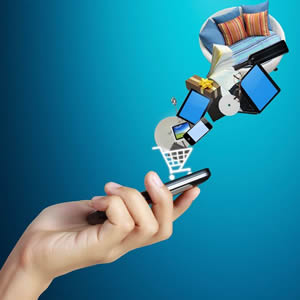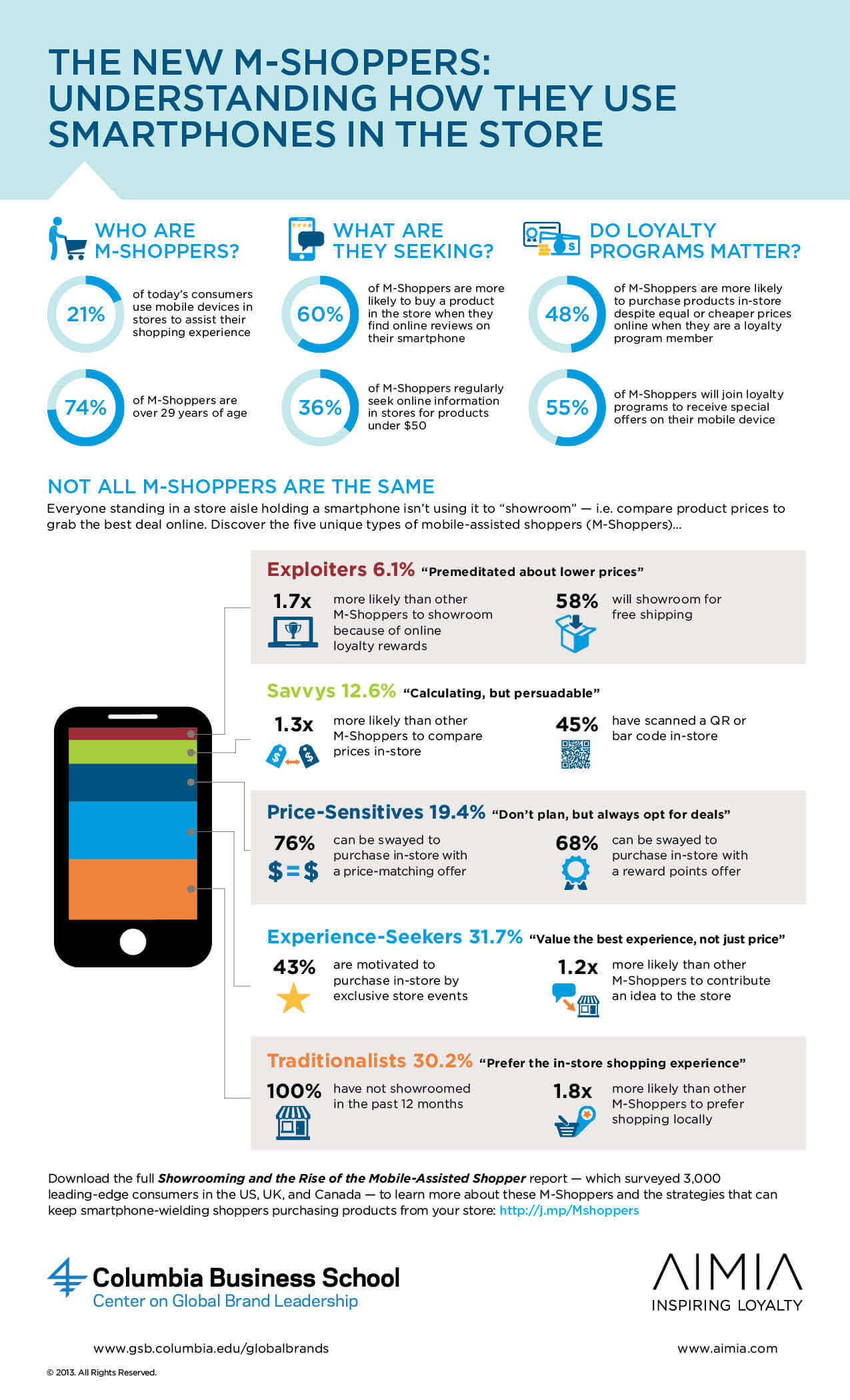
I know my way around assembly just as much as the next guy, but I have to be honest when I tell you that there are lots of other things I would rather be doing with my weekend then putting together a complicated piece of furniture. My experience is that these sorts of things end up taking twice as long as you thought and always result in those troubling extra pieces.
So I did what any smartphone enabled shopper would do. I looked up an online review of the product to see if the poor bloke who already bought this entertainment center was done putting it together in time to see the game. When I was satisfied that this furniture wasn’t going to ruin my weekend, we loaded it on the trolley and headed to the checkout.
So when I read the article by the Columbia School of Business and AIMIA (a global leader in loyalty management) about the 5 types of mobile-assisted shoppers, or mShoppers, I saw that I was considered a “traditionalist.” This doesn’t surprise me that much as I figure I am somewhat of a traditional guy.
But what did surprise me in the article was that M-Shopping is not as much a threat to retail sales as it is an opportunity to improve them. Not only do retailers have a chance to curb the practice of showrooming (when a customer goes into a store to see a product then buys it later online) but they can also use mobile technology to enhance the in-store customer experience with loyalty and reward programs that will build their long-term relationship with consumers.
Researchers studied over 3,000 consumers in the U.S., UK and Canada to see what mobile technology had changed the way they shop in retail stores. They reviewed data from the group to identify which consumers were the most likely to showroom, who was using the loyalty programs that include things like free shipping, and also to see who was most likely to use vouchers or price matching apps. After looking at all the data, the study showed that there are five specific types of M-Shoppers. Each group has similar traits and behaviors that retailers can use to target them specifically.
There were a few surprises in the data they collected. The article claims to “debunk the myth” of showrooming as it is not as prevalent as at first retailers feared. The vast majority of consumers (over 60%) use the mobile technology simply to get more information if they use it at all. Additionally, these are not just the millennials as was originally thought. The facts are that 74% of M-Shoppers are over the age of 29. Also, price is not the only value of M-Shoppers; they are also driven by immediacy and convenience. Finally, loyalty programs are motivating members to buy the product in store, even if the price is the same or less online.
In my post on LinkedIn, “The Rise of Mobile Shoppers and How You Can Reach Them”, I gave some tips on how to reach your customers through mobile technology, which includes online vouchers, information apps, loyalty programs and mobile payment processing. I have suggested specific activities that will help retailers target each of the five groups.
The 5 Types of M-Shoppers and how you can use mobile technology to reach them:
-
- Exploiters: These are the smallest group of mShoppers currently (6%). They are the most likely to showroom. But retailers would be wise to try to entice this group to still buy from their organization by improving the effectiveness and efficiency of their website. Apparently, this group is almost as likely to buy it from their site as they are from a competitor.
Mobile Strategy: Vouchers, Mobile Payment Processing - Savvy’s: This group knows what they want and how to look for it. They are the second smallest group (13%) but the best group for targeting with mobile experiences. Because they are comfortable with their technology, the savvy’s are the best group for testing loyalty programs, offers and new programs through their mobile devices
Mobile Strategy: Vouchers, Information Apps, Loyalty Programs, Mobile Payment Processing - Price Sensitives: Slightly larger than the Savvy’s (at 19%), this group responds to both types of experiences: retail and mobile. They do not always use their mobile devices when shopping and usually respond well to store promotions. This is a group to target with x and Y.
Mobile Strategy: Vouchers, Loyalty Programs - Traditionalists: This group poses the least threat of showrooming of all the groups. That’s because they are mostly using the phone to consult with friends and family or to look up online reviews (sound like anyone you know?). Traditionalists are likely to interact with your company in the store, on the website, and through an app. They are also likely to respond to a QR code. Generally, however, this group (which is about 30% of the market) is going to buy in the store.
Mobile Strategy: Information apps, loyalty programs - Experience Seekers: As the largest group in the study (at 31%), the experience seekers value the customer experience more than price. The group shows retailers that there are lots of opportunities to expand the mobile experience with their shoppers. But they also show that retailers must also provide an excellent in-store experience.
Mobile Strategy: Loyalty programs
- Exploiters: These are the smallest group of mShoppers currently (6%). They are the most likely to showroom. But retailers would be wise to try to entice this group to still buy from their organization by improving the effectiveness and efficiency of their website. Apparently, this group is almost as likely to buy it from their site as they are from a competitor.
The retail experience has changed in recent years with the introduction of mobile technology, to be certain. According to the study by Columbia Business School and AIMIA, however, it is not a threat to the retail business but an opportunity to engage your customers on another level. And of course, another way to enhance their customer experience with your brand. Retailers that can segment their customers and target them with specific mobile enhancements can use this new opportunity to increase their repeat business and loyalty from their consumers, in the store and otherwise.
| Colin Shaw is founder & CEO of Beyond Philosophy, one of the world’s first organizations devoted to customer experience. Colin is an international author of four best-selling books & recognized Business Influencer by LinkedIn. Beyond Philosophy provide consulting, specialised research & training from our Global Headquarters in Tampa, Florida, USA. Follow Colin Shaw on Twitter: @ColinShaw_CX |


